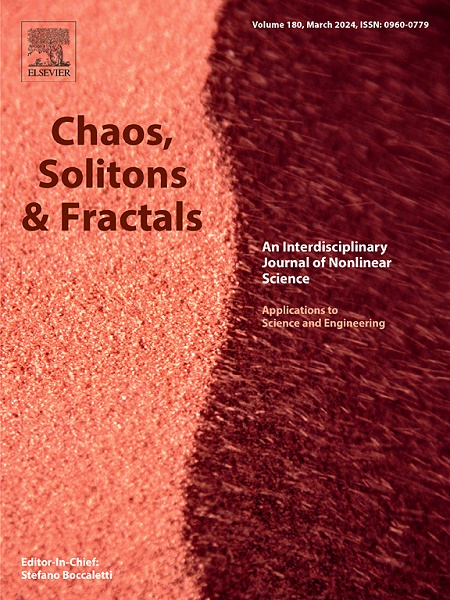基于临界安全势场和驾驶员警惕性反馈的混合交通流点阵模型:车辆质量和体积差异影响下临界安全势场波动的数值模拟
IF 5.6
1区 数学
Q1 MATHEMATICS, INTERDISCIPLINARY APPLICATIONS
引用次数: 0
摘要
随着智能网联汽车的快速发展,管理由传统乘用车、轻型乘用车和商用车组成的混合交通流已成为交通领域的重大挑战。本文提出了一种基于临界安全势场和驾驶员警惕性反馈的交通流点阵模型,以解决混合交通环境中车辆质量、体积和长度差异所带来的稳定性和安全性问题。首先,引入轻量化乘用车,建立混合交通流的新场景。其次,对传统的安全势场模型进行改进,将车辆速度、质量、长度等特征纳入宏观交通流模型;最后,引入不同车辆类型的驾驶员警惕性反馈,建立混合交通环境下的网格模型。线性和非线性稳定性分析表明,商用车数量和质量的增加通过驾驶员警惕性反馈略微增强了交通流的稳定性,增加商用车的驾驶员警惕性反馈可以有效改善交通稳定性,而增加轻型乘用车的警惕性反馈则容易加剧交通拥堵。数值分析进一步验证了模型的理论准确性,将微观交通流与宏观交通流相结合,模拟了不同车辆质量和体积差的混合交通条件下密度波和临界安全势场力的演化。该模型通过引入驾驶员警惕性反馈和临界安全势场,为理解和预测混合交通流的动态行为提供了新的理论框架,为解决混合交通环境下的交通稳定性问题提供了创新的解决方案。本文章由计算机程序翻译,如有差异,请以英文原文为准。
A lattice model of mixed traffic flow based on critical safety potential field and driver vigilance feedback: Numerical simulation of critical safety potential field fluctuations characterizing the effects of vehicle mass and volume differences
With the rapid development of intelligent connected vehicles, managing mixed traffic flow composed of conventional passenger cars, lightweight passenger cars, and commercial vehicles has become a significant challenge in the field of transportation. This paper proposes a lattice model of traffic flow based on a critical safety potential field and driver vigilance feedback to address the stability and safety issues caused by differences in vehicle mass, volume, and length in mixed traffic environments. First, the model introduces lightweight passenger vehicles to establish a new scenario for mixed traffic flow. Second, it improves the traditional safety potential field model by incorporating vehicle speed, mass, and length characteristics into the macro-traffic flow model. Finally, it introduces driver vigilance feedback for different vehicle types to create a novel lattice model for mixed traffic environments. Linear and nonlinear stability analyses indicate that while the increase in commercial vehicle volume and mass slightly enhances traffic flow stability through driver vigilance feedback, increasing driver vigilance feedback for commercial vehicles can effectively improve traffic stability, whereas increasing vigilance feedback for lightweight passenger cars tends to exacerbate traffic congestion. Numerical analyses further verify the theoretical accuracy of the model, integrating micro-traffic flow with macro-traffic flow and simulating the evolution of density waves and critical safety potential field forces under mixed traffic conditions with varying vehicle mass and volume differences. The model proposed in this paper, by introducing driver vigilance feedback and a critical safety potential field, offers a new theoretical framework for understanding and predicting the dynamic behavior of mixed traffic flow, providing an innovative solution to address traffic stability issues in mixed traffic environments.
求助全文
通过发布文献求助,成功后即可免费获取论文全文。
去求助
来源期刊

Chaos Solitons & Fractals
物理-数学跨学科应用
CiteScore
13.20
自引率
10.30%
发文量
1087
审稿时长
9 months
期刊介绍:
Chaos, Solitons & Fractals strives to establish itself as a premier journal in the interdisciplinary realm of Nonlinear Science, Non-equilibrium, and Complex Phenomena. It welcomes submissions covering a broad spectrum of topics within this field, including dynamics, non-equilibrium processes in physics, chemistry, and geophysics, complex matter and networks, mathematical models, computational biology, applications to quantum and mesoscopic phenomena, fluctuations and random processes, self-organization, and social phenomena.
 求助内容:
求助内容: 应助结果提醒方式:
应助结果提醒方式:


